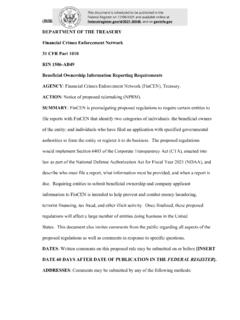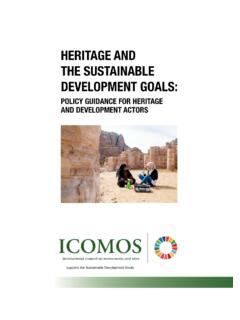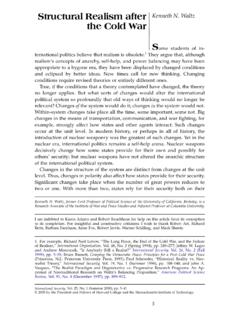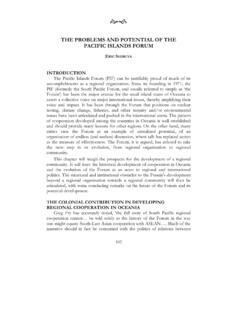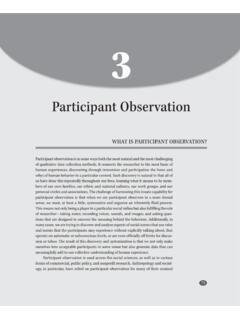Transcription of EDUCATION & SOCIOECONOMIC STATUS
1 SOCIOECONOMIC STATUS SOCIOECONOMIC STATUS (SES) encompasses not just income but also educational attainment, financial security, and subjective perceptions of social STATUS and social class. SOCIOECONOMIC STATUS can encompass quality of life attributes as well as the opportunities and privileges afforded to people within society. Poverty, specifically, is not a single factor but rather is characterized by multiple physical and psychosocial stressors. Further, SES is a consistent and reliable predictor of a vast array of outcomes across the life span, including physical and psychological health. Thus, SES is relevant to all realms of behavioral and social science, including research, practice, EDUCATION , and AFFECTS OUR SOCIETYSES affects overall human functioning, including our physical and mental health.
2 Low SES and its correlates, such as lower educational achievement, poverty, and poor health, ultimately affect our society. Inequities in health distribution, resource distribution, and quality of life are increasing in the United States and globally. Society benefits from an increased focus on the foundations of SOCIOECONOMIC inequities and efforts to reduce the deep gaps in SOCIOECONOMIC STATUS in the United States and AND EDUCATIONAL ISSUES Research indicates that children from low-SES households and communities develop academic skills slower than children from higher SES groups (Morgan, Farkas, Hillemeier, & Maczuga, 2009). For instance, low SES in childhood is related to poor cognitive development, language, memory, socioemotional processing, and consequently poor income and health in adulthood.
3 The school systems in low-SES communities are often underresourced, negatively affecting students academic progress and outcomes (Aikens & Barbarin, 2008). Inadequate EDUCATION and increased dropout rates affect children s academic achievement, perpetuating the low-SES STATUS of the community. Improving school systems and early intervention programs may help to reduce some of these risk factors; therefore, increased research on the correlation between SES and EDUCATION is and Family ResourcesLiteracy gaps in children from different SOCIOECONOMIC backgrounds exist before formal schooling begins. Children from low-SES families are less likely to haveexperiences that encourage the development offundamental skills of reading acquisition, such asphonological awareness, vocabulary, and oral language(Buckingham, Wheldall, & Beaman-Wheldall, 2013).
4 Children's initial reading competency is correlated with thehome literacy environment, number of books owned, andparent distress (Aikens & Barbarin, 2008; Bergen, Zuijen,Bishop, & Jong, 2016). However, poor households have lessaccess to learning materials and experiences, includingbooks, computers, stimulating toys, skill-building lessons, ortutors to create a positive literacy environment (Bradley,Corwyn, McAdoo, & Garc a Coll, 2001; Orr, 2003). Prospective college students from low-SES backgrounds areless likely to have access to informational resources aboutcollege (Brown, Wohn, & Ellison, 2016). Additionally,compared to high-SES counterparts, young adults from low-SES backgrounds are at a higher risk of accruing student loandebt burdens that exceed the national average (Houle, 2014).
5 SES and the School EnvironmentResearch indicates that school conditions contribute more to SES differences in learning rates than family characteristics do (Aikens & Barbarin, 2008). Researchers have argued that classroom environment plays an important role in & SOCIOECONOMIC STATUS A teacher s years of experience and quality of training are correlated with children s academic achievement (Gimbert, Bol, & Wallace, 2007). Children in low-income schools are less likely to have well-qualified teachers (Clotfelter, Ladd, & Vigdo, 2006). The following factors have been found to improve the quality of schools in low-SES neighborhoods: a focus on improving teaching and learning, creation of an information-rich environment, building of a learning community, continuous professional development, involvement of parents, and increased funding and resources (Muijs, Harris, Chapman, Stoll, & Russ, 2009).
6 SES and Academic Achievement Research continues to link lower SES to lower academic achievement and slower rates of academic progress as compared with higher SES communities. Children from low-SES families enter high school withaverage literacy skills 5 years behind those of high-income students (Reardon, Valentino, Kalogrides,Shores, & Greenberg, 2013). In 2014, the high school dropout rate among persons 16 24years old was highest in low-income families ( ) ascompared to high-income families ( ; National Centerfor EDUCATION Statistics, 2014). The success rate of low-income students in science,technology, engineering, and mathematics disciplinesis much lower than that of students who do not comefrom underrepresented backgrounds (Doerschuk et al.)
7 ,2016). According to the Census Bureau (2014), individualswithin the top family income quartile are 8 times more likelyto obtain a bachelor s degree by age 24 as compared toindividuals from the lowest family income HealthIncreasing evidence supports the link between lower SES and learning disabilities or other negative psychological outcomes that affect academic achievement. Low SES and exposure to adversity are linked to decreasededucational success (McLaughlin & Sheridan, 2016). Suchtoxic stress in early childhood leads to lasting impacts onlearning, behavior, and health (Committee on PsychosocialAspects of Child and Family Health et al.
8 , 2012). Children from lower SES households are about twice as likelyas those from high-SES households to display learning-related behavior problems. A mother s SES is also related toher child s inattention, disinterest, and lack of cooperation inschool (Morgan et al., 2009). Perception of family economic stress and personal financialconstraints affected emotional distress/depression instudents and their academic outcomes (Mistry, Benner, Tan,& Kim, 2009).GET INVOLVED Consider SES in your EDUCATION , practice, andresearch efforts. Stay up to date on legislation and policies that explore andwork to eliminate SOCIOECONOMIC disparities.
9 Visit theOffice on Government Relations for more details: Visit APA s Office on SOCIOECONOMIC STATUS (OSES) can be found at Schools with students from the highest concentrations of poverty have fewer library resources to draw on (fewer staff, libraries are open fewer hours per week, and staff are less well rounded) than those serving middle-income children (Pribesh, Gavigan, & Dickinson, 2011).SES and Career Aspirations Social class has been shown to be a significant factor in influencing career aspirations, trajectory, and achievement. Those from higher social class backgrounds tend to be more successful in developing career aspirations and are generally better prepared for the world of work because of access to resources such as career offices, guidance counselors, better schools, high level social actors , and familial experience with higher EDUCATION (Diemer & Ali, 2009).
10 Diemer and Blustein (2007) found that racial, ethnic, and SOCIOECONOMIC barriers generally hinder individuals vocational development. Career barriers are significantly higher for those from poor backgrounds, people of color, women, those who are disabled, and LGBTIQ-identified individuals (Blustein, 2013). A study showed that individuals from a lower social class generally had less career-related self-efficacy when it came to vocational aspirations (Ali, McWhirter, & Chronister, 2005). Students who were randomly assigned to higher quality classroom in grades K-3 earned more, were more likely to attend college, saved more for retirement, and lived in better neighborhoods (Chetty et al.)










